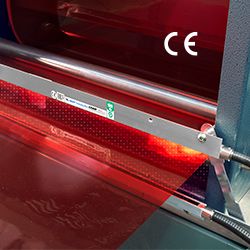Lean is the Future of Manufacturing
.jpg)
Lean, a system that reduces production and response times from suppliers to customers, is continuing to transform the manufacturing industry through its focus on efficiency, productivity, and the reduction of waste for producers and suppliers of goods.
Amazon, Toyota, and other major corporations are strong proponents of applying the principles of lean to their business. To satisfy a customer base that wants it “now,” Amazon took all their processes apart and found myriad ways to eliminate waste, which for lean manufacturing can mean everything from reevaluating the materials required for producing and shipping a product, to the processes used to get that product from design to customer.
Reducing wait times and eliminating extraneous handling and labor through lean improves your bottom line. The capital saved can then be reinvested in new and better products and processes to further improve the customer experience, which in turn fuels business growth.
For manufacturing companies interested in applying the principles of lean to improve and expand their business, here are four important steps towards making the transition:
Out With The Old
The lean manufacturing journey begins by recognizing that the old way of running operations may be holding your company back, and potentially making you less competitive in the marketplace. A business needs to be willing to invest the time and capital needed, or it will result in a failed effort. Once your budget has been set, spend some time identifying areas of waste. This can include wait times, unnecessary processing, overproduction, human movement, excess inventory, and task complexity. Next, set expectations within the company that change is coming, and how everyone will benefit from the forthcoming improvements.
Build a New Pyramid
Reevaluate your current work pyramid. In traditional manufacturing organizations, the base of the pyramid typically consists of line workers, while the company’s CEO and executive team sit at the top. The new, “lean” way of thinking flips that pyramid, so now, the most important people—those who will be responsible for the company’s continuous improvement—are the line workers. If you're not willing to accept that cultural change at your company, then lean manufacturing will not work for you. You will end up wasting a lot of money on some shiny new tools that ultimately won’t deliver what you were expecting. But if you can get over that hurdle, the rest is smooth sailing by comparison.
Hire a Good Coach
To identify the cultural changes your organization is going to need to make, it is essential to hire a qualified coach. Comparable to a fitness trainer, a good coach stays with you for six months or more to teach everything you need to know to get into lean shape. They will evaluate your current organizational structure, identify areas of inefficiency, teach your teams ways to improve efficiencies, coach them through the business transformation, and get everybody working on a continuous improvement path.
Prepare for the Journey
Be ready for the long haul. Once your inefficiencies are identified, develop new repeatable processes designed to eliminate that waste. This includes creating revised roles and responsibilities and ensuring everybody knows their place in the new organizational structure. From there, move on to value stream mapping, where every step of a given process is diagrammed including updating standard work roles and responsibilities for everyone within the company. And don’t forget to incorporate suppliers into your new processes. Their symbiotic cooperation will help to strengthen your existing relationship and further propel the manufacturing operation. And lastly, strive for continuous improvement, because doing so will uncover never-ending opportunities to improve your company.
Lean manufacturing is a paradigm shift. During that transformation, you will find that some employees are set in their ways and will question the need for change. However, once the new organizational mechanics are in place, expect employee morale to improve significantly, because everyone at all layers in the company will feel like valued contributors, which leads to improved productivity.
However, it is important to understand that lean manufacturing is not something that happens overnight. We have spent the last three years making ourselves lean, and we are just now starting to really see the financial benefits of the groundwork we've laid. Remember, this is a journey, not a sprint.
Randy Carr is President and CEO of World Emblem, the largest emblem and patch manufacturer in the world. Throughout his tenure, he has overseen the implementation of new technologies and methodologies – including lean manufacturing – that have led World Emblem to become the leading embroidery manufacturer.
Comments (0)
This post does not have any comments. Be the first to leave a comment below.
Featured Product

